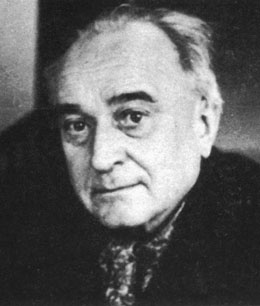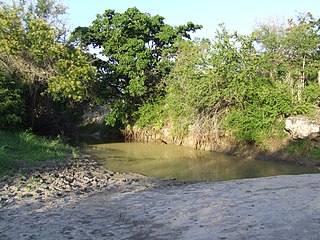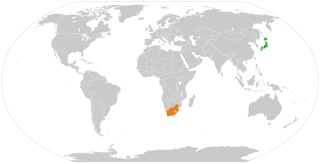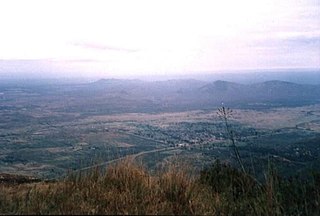
The Maasai are a Nilotic ethnic group inhabiting northern, central and southern Kenya and northern Tanzania. They are among the best-known local populations internationally due to their residence near the many game parks of the African Great Lakes and their distinctive customs and dress. The Maasai speak the Maa language, a member of the Nilotic language family that is related to the Dinka, Kalenjin and Nuer languages. Except for some elders living in rural areas, most Maasai people speak the official languages of Kenya and Tanzania, Swahili and English. The Maasai population has been reported as numbering 1,189,522 in Kenya in the 2019 census, compared to 377,089 in the 1989 census, though many Maasai view the census as government meddling and therefore either refuse to participate or actively provide false information. Many Maasai tribes throughout Tanzania and Kenya welcome visitors to their villages to experience their culture, traditions, and lifestyle, in return for a fee.

Swahili, also known by its local name Kiswahili, is the native language of the Swahili people, who are found primarily in Tanzania, Kenya and Mozambique. It is a Bantu language, though Swahili has borrowed a number of words from foreign languages, particularly Arabic and Persian, but also words from Portuguese, English and German. Around forty percent of Swahili vocabulary consists of Arabic loanwords, including the name of the language. The loanwords date from the era of contact between Arab slave traders and the Bantu inhabitants of the east coast of Africa, which was also the time period when Swahili emerged as a lingua franca in the region. The number of Swahili speakers, be they native or second-language speakers, is estimated to be around 80 million.

Tanzania, officially the United Republic of Tanzania, is a country in East Africa within the African Great Lakes region. It borders Uganda to the north; Kenya to the northeast; Comoro Islands and the Indian Ocean to the east; Mozambique and Malawi to the south; Zambia to the southwest; and Rwanda, Burundi, and the Democratic Republic of the Congo to the west. Mount Kilimanjaro, Africa's highest mountain, is in northeastern Tanzania. According to the United Nations, Tanzania has a population of 63.59 million, making it the most populous country located entirely south of the equator.

Sir Edward Evan Evans-Pritchard, Kt FBA FRAI was an English anthropologist who was instrumental in the development of social anthropology. He was Professor of Social Anthropology at the University of Oxford from 1946 to 1970.

Maasai or Maa is an Eastern Nilotic language spoken in Southern Kenya and Northern Tanzania by the Maasai people, numbering about 800,000. It is closely related to the other Maa varieties: Samburu, the language of the Samburu people of central Kenya, Chamus, spoken south and southeast of Lake Baringo ; and Parakuyu of Tanzania. The Maasai, Samburu, il-Chamus and Parakuyu peoples are historically related and all refer to their language as ɔl Maa. Properly speaking, "Maa" refers to the language and the culture and "Maasai" refers to the people "who speak Maa."

Following Tanganyika's independence (1961) and unification with Zanzibar (1964), leading to the formation of the state of Tanzania, President Julius Nyerere emphasised a need to construct a national identity for the citizens of the new country. To achieve this, Nyerere provided what has been regarded by some commentators as one of the most successful cases of ethnic repression and identity transformation in Africa.

Mkomazi National Park is located in northeastern Tanzania on the Kenyan border, in Kilimanjaro Region and Tanga Region. It was established as a game reserve in 1951 and upgraded to a national park in 2006.

The Tanzania national cricket team is the men's team that represents Tanzania in international cricket. Cricket has been played in what is now Tanzania since 1890, and the national side first played in 1951. The Tanzania Cricket Association became an associate member of the International Cricket Council (ICC) in 2001, having previously been part of the East and Central Africa Cricket Conference, which was a member of the ICC in its own right.

The Uganda–Tanzania War, known in Tanzania as the Kagera War and in Uganda as the 1979 Liberation War, was fought between Uganda and Tanzania from October 1978 until June 1979 and led to the overthrow of Ugandan President Idi Amin. The war was preceded by a deterioration of relations between Uganda and Tanzania following Amin's 1971 overthrow of President Milton Obote, who was close to the President of Tanzania, Julius Nyerere. Over the following years, Amin's regime was destabilised by violent purges, economic problems, and dissatisfaction in the Uganda Army.
The Kwavi people were a community commonly spoken of in the folklore of a number of Kenyan and Tanzanian communities that inhabited regions of south-central Kenya and north-central Tanzania at various points in history. The conflicts between the Uasin Gishu/Masai and Kwavi form much of the literature of what are now known as the Iloikop wars.

The Khayo is a sub tribe of the Luhya people of Kenya. They reside in Busia County, by the Kenya-Uganda border. Their Luhya neighbors are the Samia, Marachi, Wanga and Bukusu. The Bakhayo border the Bukusu on the East, the Republic of Uganda and Samias on the West, the Marachi on the South and the Wanga on the South East. On their north, they are bordered by the Iteso, a non-Luhya Nilotic people of Kenya.

Japan–South Africa relations are the current and historical bilateral relations between Japan and South Africa.

Mazinde is a community in the Korogwe District of the Tanga Region of Tanzania.
The Lumbwa were a pastoral community which inhabited southern Kenya and northern Tanzania. The term Lumbwa has variously referred to a Kalenjin-speaking community, portions of the Maa-speaking Loikop communities since the mid-19th century, and to the Kalenjin-speaking Kipsigis community for much of the late 19th to mid-20th centuries.

Arvi Johannes Hurskainen is a Finnish scholar of language technology and linguistics. Since 1985 he has developed rule-based language technology mainly for Swahili, but also for other languages, including machine translation from English to Finnish. He has created a development environment called SALAMA, but it suits to any language. The major applications developed so far include the following: the spell checker for Swahili, the annotator of corpus texts, an advanced dictionary between Swahili and English and translators from Swahili to English, from English to Swahili, and from English to Finnish. He has also developed an advanced learning system for Swahili and a system for producing targeted vocabularies for language learners. Hurskainen has compiled two annotated corpora, Helsinki Corpus of Swahili 1.0 and Helsinki Corpus of Swahili 2.0.
The Loikop people, also known as Wakuafi, Kor, Mu-Oko, Muoko/Ma-Uoko and Mwoko, were a tribal confederacy who inhabited present-day Kenya in the regions north and west of Mount Kenya and east and south of Lake Turkana. The area is roughly conterminous with Samburu and Laikipia Counties and portions of Baringo, Turkana and (possibly) Meru Counties. The group spoke a common tongue related to the Maasai language, and typically herded cattle. The Loikop occasionally interacted with the Cushitic, Bantu, and Chok peoples. The confederacy had dispersed by the 21st century.
The Parakuyo people, are a community of about thirty thousand pastoralists who live scattered across Tanzania today. They are the principal speakers of the Kwavi language.
The Iloikop wars were a series of wars between the Maasai and a community referred to as Kwavi and later between Maasai and alliance of reformed Kwavi communities. These were pastoral communities that occupied large tracts of East Africa's savanna's during the late 18th and 19th centuries. These wars occurred between c.1830 and 1880.
The Lumbwa Treaty event took place on 13th October 1889, in Lumbwa in Kericho between the Kipsigis led by Menya Araap Kisiara and the British East Africa administration. It was based on a cultural practice of oath taking in Kipsigis called Mummek or Mummiat or Mumma. Mumma means "to do something impossibly disgusting". It involves two parties taking an oath and invoking a preemptive curse if the oath is to be broken by any party taking the oath. There usually would also be a performance of black magic; and on this particular event a coyote was savored in two halves with each party burying its part and making the oath never to harm each other in any way.